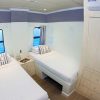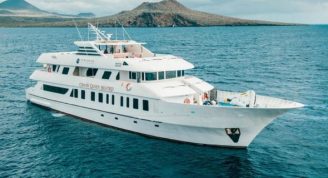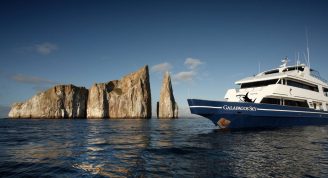Description
The 8 day south-western tour aboard the catamaran Archipel I gives you an extensive overview of the Galapagos Islands. You will have the chance to combine the circumnavigation of the Isabela Island with excursions in the most southern points of the archipelago. You will also be able to snorkel with sea lions in the Loberia and visit the Charles Darwin Research Station in Santa Cruz.
Shorter 4- and 5-day cruises are available. Please contact us for more information.
Trip Name
Galapagos 8 Day Route A aboard Archipel I
Days
8
Overview
Vessel Type: Catamaran
Length: 88 ft, 27 m
Passenger Capacity: 16
Built: 2005
Stable & wide
Meet the two pioneers of the Galapagos: Archipel I & II! These motor catamarans arrived in 2002, and offer stable double hulls, wide decks and large social areas, all of which are near to each other.
Our cosy accommodation
Each catamaran offers eight cabins above the waterline, with two sea-view windows. They also include clean private facilities, hot/cold water, low beds, air-conditioning, and storage space for a comfortable stay.
Spacious social areas
The Archipels have ample social areas that will complement a comfortable stay. Shared with a total of just 16 guests; the lounge, solarium, resting areas & 'Al Fresco' dining area are great choices for you to relax and enjoy the nature that surrounds you.
Greater safety on-board
Safety on-board (and during the programmed activities) is always our highest concern. We have therefore obtained the International Safety Management Certificate of the International Marine Organisation (IMO), carry proper security equipment, and put board regulations and safety instructions.











